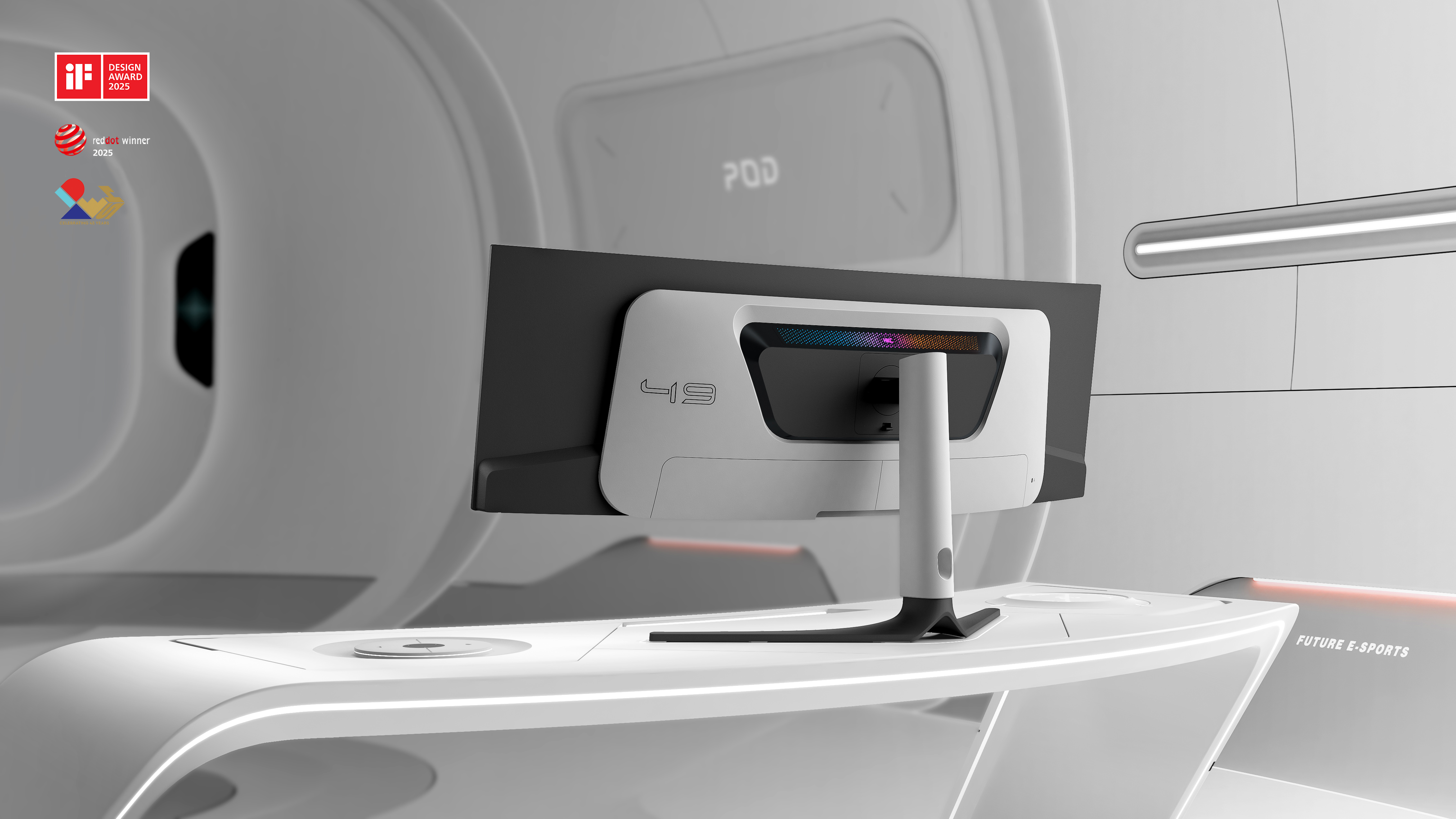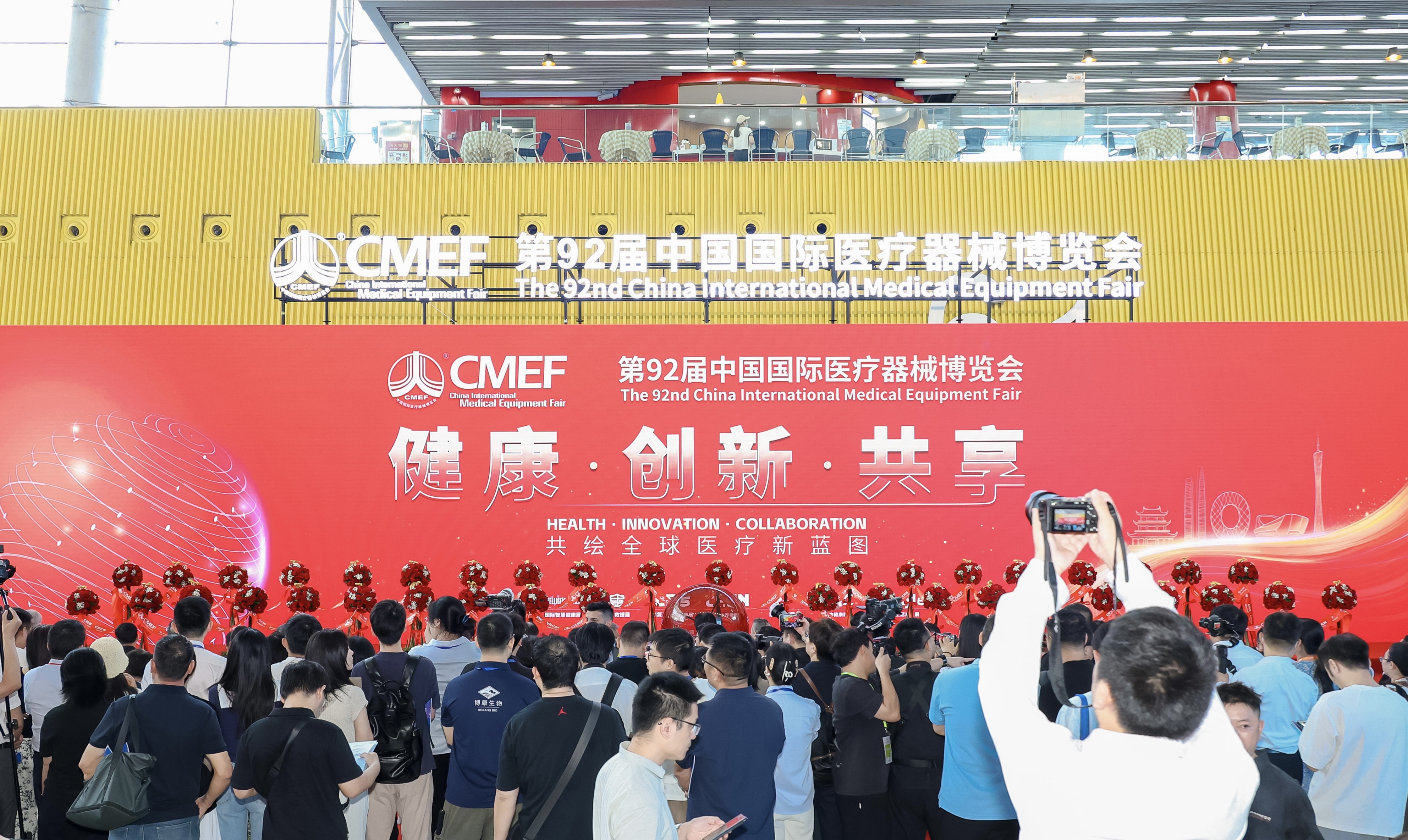Medical product design details - indicator light and lighting effect design
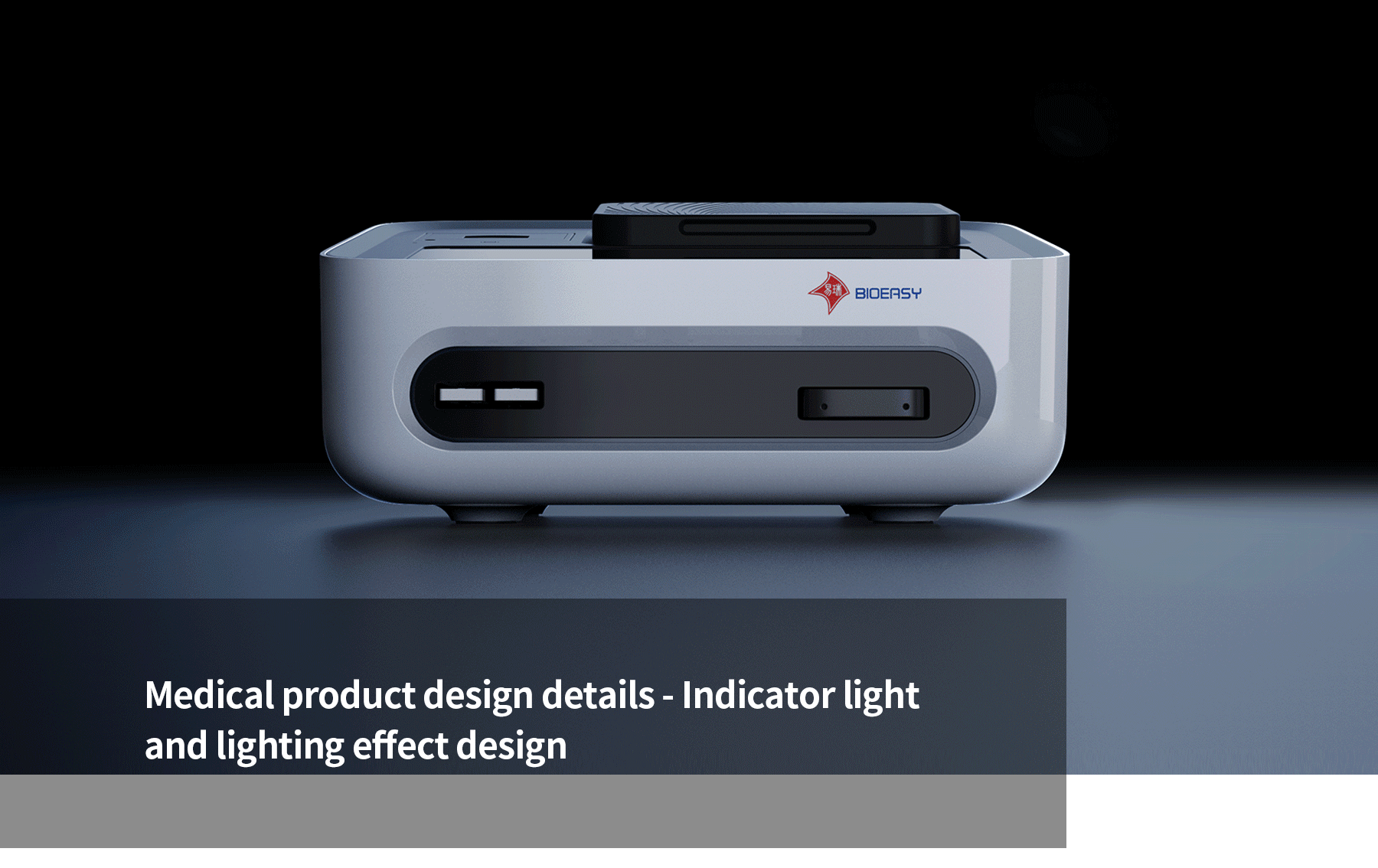
In medical settings, the "communication capability" of a device often determines the efficiency of healthcare operations and patient safety. Indicator lights and lighting effect design serve as the most direct and critical "language of dialogue" between medical products and their users. Unlike consumer electronics, where indicator lights and lighting effects can pursue personalization, medical product indicator lights and lighting effects must fulfill three core missions: "status feedback, risk alerts, and operational guidance." Every detail—be it brightness, color, or flashing frequency—is closely tied to clinical safety. As a team dedicated to the industrial design of medical products, WYYL Design consistently believes that excellent indicator light and lighting effect design represents "an invisible form of thoughtfulness" and, more importantly, "unfailing safety."
Outline of This Issue:
Primary Functions of Indicator Lights in Medical Products
Core Principles of Indicator Light and Lighting Effect Design
Showcasing Classic Lighting Design Cases
(Primary Functions of Indicator Lights in Medical Products)
Indicator lights are a crucial component of medical products. If we personify medical products, indicator lights can be seen as the "mouth" of the device, serving as a means of communication with users. They convey information and status, provide operational guidance, and display the device's working conditions.
· Functional Orientation Level: They act as the device's "health monitor," providing real-time feedback on operational status, fault warnings, and operation confirmation.
1.Medical Device Status Indication:
Power status: Shows whether the device is powered on.
Operational status: Indicates if the device is running normally or in standby mode.
Fault alarm: Alerts to device malfunctions or abnormalities through lighting changes.
2.User Interaction Feedback:
Operation confirmation: Provides immediate feedback after user actions, such as button presses or mode switches.
Mode indication: Displays the current working mode of the device, e.g., high or low power mode.
3.Safety Warnings:
Hazard alerts: Warns users of dangerous conditions, such as high temperature or high pressure.
Battery reminders: Alerts users to recharge or replace the battery when power is low.
4.Network and Communication Status:
Network connection: Indicates whether the device is connected to a network and the signal strength.
Data transmission: Shows whether the device is sending or receiving data.
5.Charging Status:
Charging in progress: Indicates the device is charging.
Fully charged: Signals that charging is complete.
6.Multi-Device Coordination:
Pairing status: Shows whether the device has successfully paired with other devices.
Synchronization status: Indicates whether the device is synchronizing data.
7.Environmental Adaptation:
Nighttime use: Helps users identify device status in low-light conditions.
Multi-scenario applications: Adjusts indicator brightness or color based on the environment to ensure clear visibility.
8.Energy Saving and Environmental Protection:
Power-saving mode: Reduces indicator brightness or turns it off to save energy.
Auto-off: Automatically turns off the indicator when the device is unused for an extended period.
9.Special Function Indications:
Timer function: Displays whether a timed task is activated.
Specific modes: Alerts users to special modes, such as child lock or energy-saving mode, through indicator lights.

· Emotional Dimension: Soft lighting can alleviate user anxiety, while flashing alerts intensify the sense of urgency. Colors and dynamic effects can even convey brand warmth.
Soothing Atmosphere: Treatment devices internally use warm yellow or soft white lighting to reduce patient tension. Some equipment also incorporates projected starry skies or simulated natural landscapes inside cabins to create a relaxing environment.
Avoiding Glare: Lighting design prevents direct exposure to patients’ eyes by employing diffuse or indirect illumination methods, such as concealed light strips on the top or sides of devices, ensuring even and gentle light distribution.
· Aesthetics and Brand Identity: Unique lighting designs enhance brand recognition, while indicator lights, as part of the product’s exterior, elevate overall aesthetic appeal.
Building Brand Recognition: Distinctive lighting colors and dynamic effects can serve as visual symbols for the product or even the entire brand family, reinforcing a sense of professionalism and brand identity.
Attention to Detail: The shape, texture, or dynamic effects of light strips enhance the quality of product details. For instance, adding soft rounded edges or gradient effects to the edges of light strips can make the device’s appearance more refined.
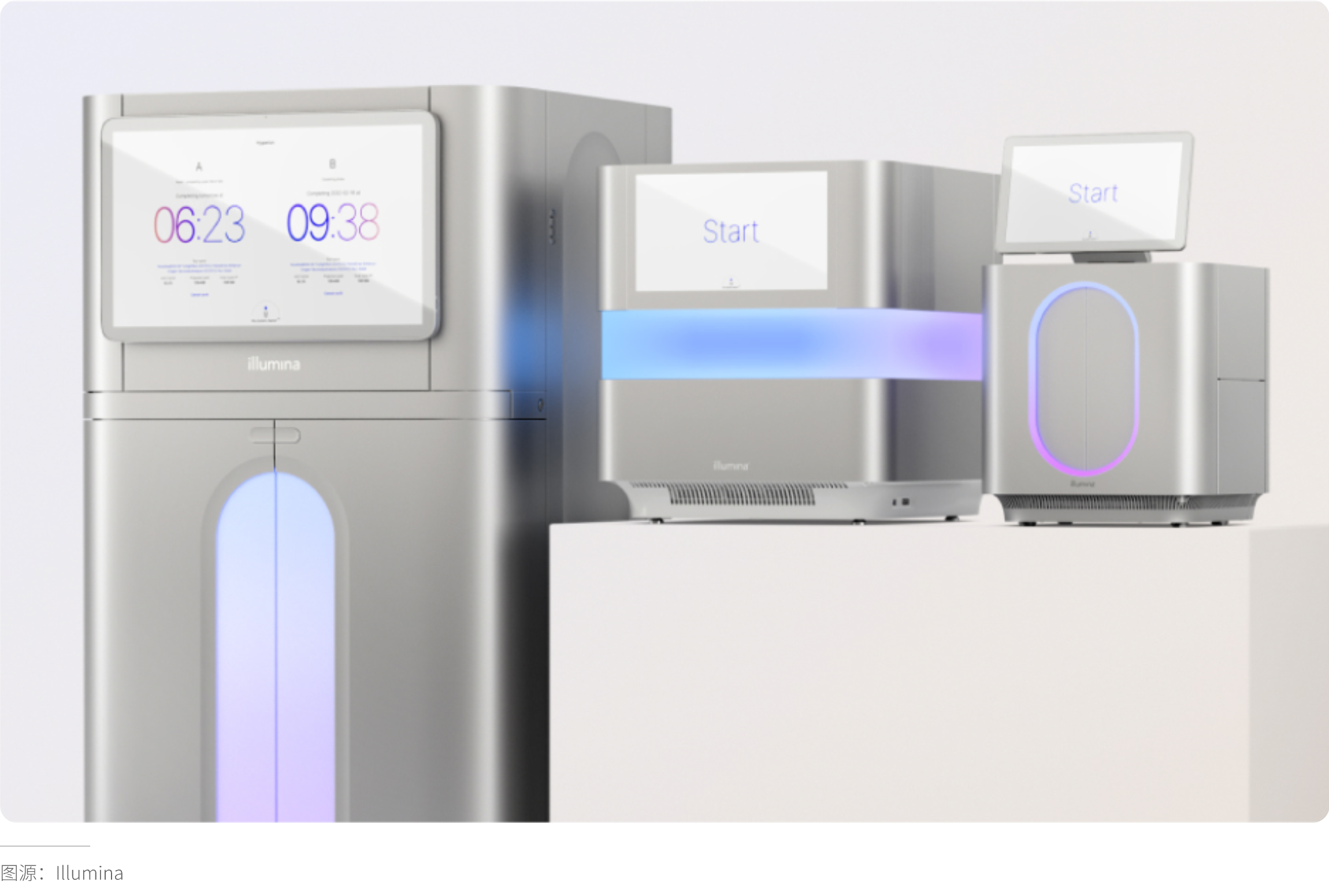
(Core Principles of Indicator Light and Lighting Effect Design)
The design of indicator lights and lighting effects in medical products is not based on "subjective aesthetics" but must adhere to three rigid principles: safety, compliance, and usability. Every design decision must align with clinical scenario requirements and industry standards:
· Safety Principle: Eliminate "visual misinterpretation" and reduce cognitive load.
Safety is the primary rule in medical indicator light design, with the core goal of ensuring that healthcare professionals do not misinterpret, overlook, or confuse the indicators.
Standardized Color Coding:
Red: Emergency faults, hazardous conditions, immediate action required (e.g., alarms, device abnormalities).
Green: Normal operation, safe status, operation completed (e.g., running, process concluded).
Yellow: Warnings, attention needed, pending actions (e.g., low supplies, approaching timeouts).
Blue/White: Prompts, information, non-urgent status (e.g., standby, operational guidance).
· Brightness and Environmental Adaptation
Adjust brightness according to the device’s usage scenario:
Operating Rooms (low-light environments): Indicator brightness should be controlled within 50-100 cd/㎡ to avoid strong light directly affecting the surgical field of view.Patient Rooms (nighttime): Standby light brightness should be below 30 cd/㎡ to prevent disturbing patient sleep.
Emergency Rooms (brightly lit environments): Alarm light brightness should be increased to 200-300 cd/㎡ to ensure clear visibility even under strong lighting.
Reasonable Control of Flash Frequency:
Emergency alarms should flash at a frequency of 1-2 Hz (1-2 times per second), striking a balance between being noticeable and avoiding visual fatigue for healthcare workers.
Non-urgent prompts should flash at a frequency of 0.5 Hz or lower to minimize disruption.
· Compliance Principle: Conformity to International and Domestic Standards
Medical products must pass stringent regulatory certifications, and indicator light designs must comply with relevant standards to prevent non-compliance from hindering market entry.
International Standards: Strict adherence to IEC 60601-1-8 (Medical Electrical Equipment - Part 1-8: General Requirements for Basic Safety and Essential Performance - Collateral Standard: General Requirements, Tests, and Guidance for Alarm Systems), which explicitly defines parameters such as the color, brightness, and flashing patterns of medical device alarm lights.
Domestic Standards: Compliance with GB 9706.1-2020 (Medical Electrical Equipment - Part 1: General Requirements for Basic Safety and Essential Performance) and YY 0709-2009 (Medical Electrical Equipment - Part 1-8: General Requirements for Basic Safety and Essential Performance - Collateral Standard: General Requirements, Tests, and Guidance for Alarm Systems), ensuring the product meets regulatory requirements for the domestic market.
Special Scenario Certifications: For devices used in explosive environments (e.g., ICU gas sterilization areas), indicator lights must meet explosion-proof certification requirements (e.g., Ex d IIB T4 Ga) to avoid safety risks caused by heat generated by lighting effects.
· Usability Principle: Optimizing Design from a "Healthcare Perspective" to Reduce Operational Costs
The end users of indicator lights are healthcare professionals, and the design must align with their work habits to minimize "cognitive and operational costs."
1.Visibility of Location: Indicator lights should be positioned within the "natural field of vision" of healthcare workers, avoiding the need to bend over or turn their heads to check. For example:
Standing patient monitors: Indicator lights should be located at the top of the screen, aligned with the eye level of standing healthcare workers.
Portable ultrasound devices: Indicator lights should be placed at the edge of the control panel without obstructing buttons or the screen.
2.Clarity of Identification: Avoid confusion caused by "clustered arrangement of multiple lights." Instead, differentiate functions through "zonal placement" or "shape variations." For example:
Position "operation lights" and "alarm lights" on the left and right sides of the device, respectively.
Use "circular lights" to indicate status and "square lights" to indicate warnings, leveraging shape to reinforce differentiation.
3.Redundancy Design: For critical functions, indicator lights should form a "triple redundancy" with audible alarms and on-screen prompts. This ensures that even if healthcare workers miss the light cues, they can still receive warnings through sound or screen messages, preventing information loss due to single-point failures.
4.Consistency: Foster "conditioned reflexes" in users by unifying indicator logic across products. Different medical devices under the same brand should maintain consistent indicator behavior.
Lighting effects can be achieved through the following three methods:
Use RGB tri-color LEDs with transparent (or translucent) lamp covers, adjusting colors via software control.
Use single-color LEDs with transparent (or translucent) lamp covers, resulting in lighting effects that match the inherent color of the LEDs.
Use white LEDs with colored translucent lamp covers, resulting in lighting effects that match the color of the covers.
(The Essence of Lighting and Lighting Effect Design in Medical Equipment)
The core of lighting and lighting effect design in medical equipment lies in being "function-first and human-centered"—ensuring both the precision and safety of clinical operations, while using light and shadow to alleviate patient anxiety and support healthcare professionals in working efficiently. Furthermore, depending on the characteristics and purposes of different medical products, diverse forms of lighting can be flexibly combined to create more dynamic and versatile lighting effects. Now, let’s explore some classic lighting design cases in practice:
1.Edge Lighting: Outlining Safety and Focus
This lighting technique traces the contours of an object with a dreamy glow, creating a mysterious and elegant ambiance. It not only enhances the product's visual depth but also accentuates its silhouette, making it instantly captivating.
In medical settings, edge lighting is often applied to the casings of high-end vital signs monitors or surgical equipment. Its purpose is not to dazzle but to define the device’s soft yet clear outline in dimly lit environments. This helps prevent accidental collisions by medical staff and clearly demarcates sterile from non-sterile zones, fostering an atmosphere of focus, precision, and safety.
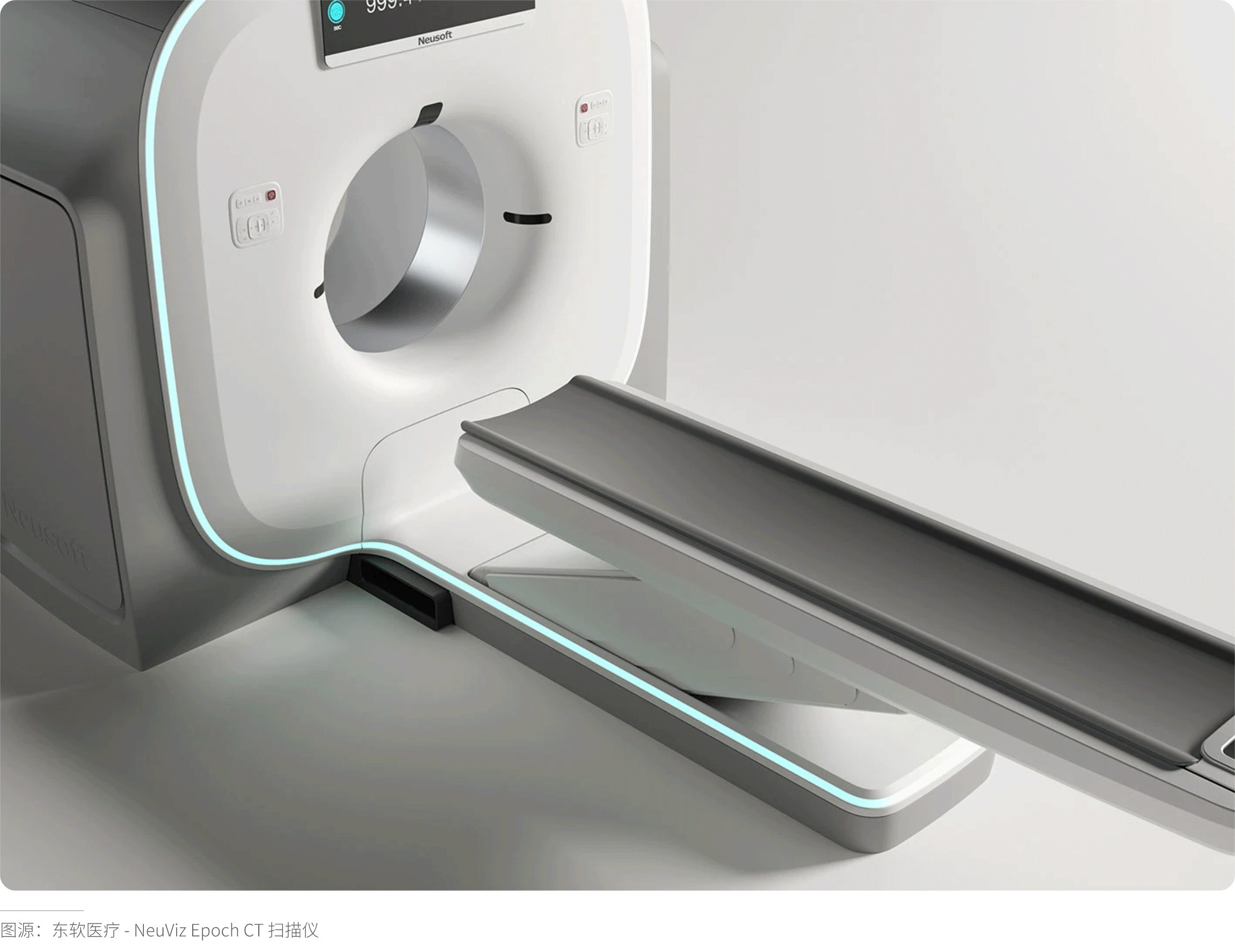
2.Dot-Matrix Lighting: Data Visualization and Status Indication
Dot-matrix lights resemble a starry sky, evoking a sense of romance and fantasy. Composed of discrete LED bulbs arranged in a matrix, this display technology uses on/off states and color variations to create dynamic effects. It flexibly presents text, icons, and graphics, making it ideal for products requiring coordinate-based information. This technology offers an intuitive and innovative display solution that meets diverse information presentation needs.
In medical devices, dot-matrix lighting serves as a messenger of information. For instance, in the parameter display area of a blood pressure monitor, it visually represents the patient's blood pressure status.
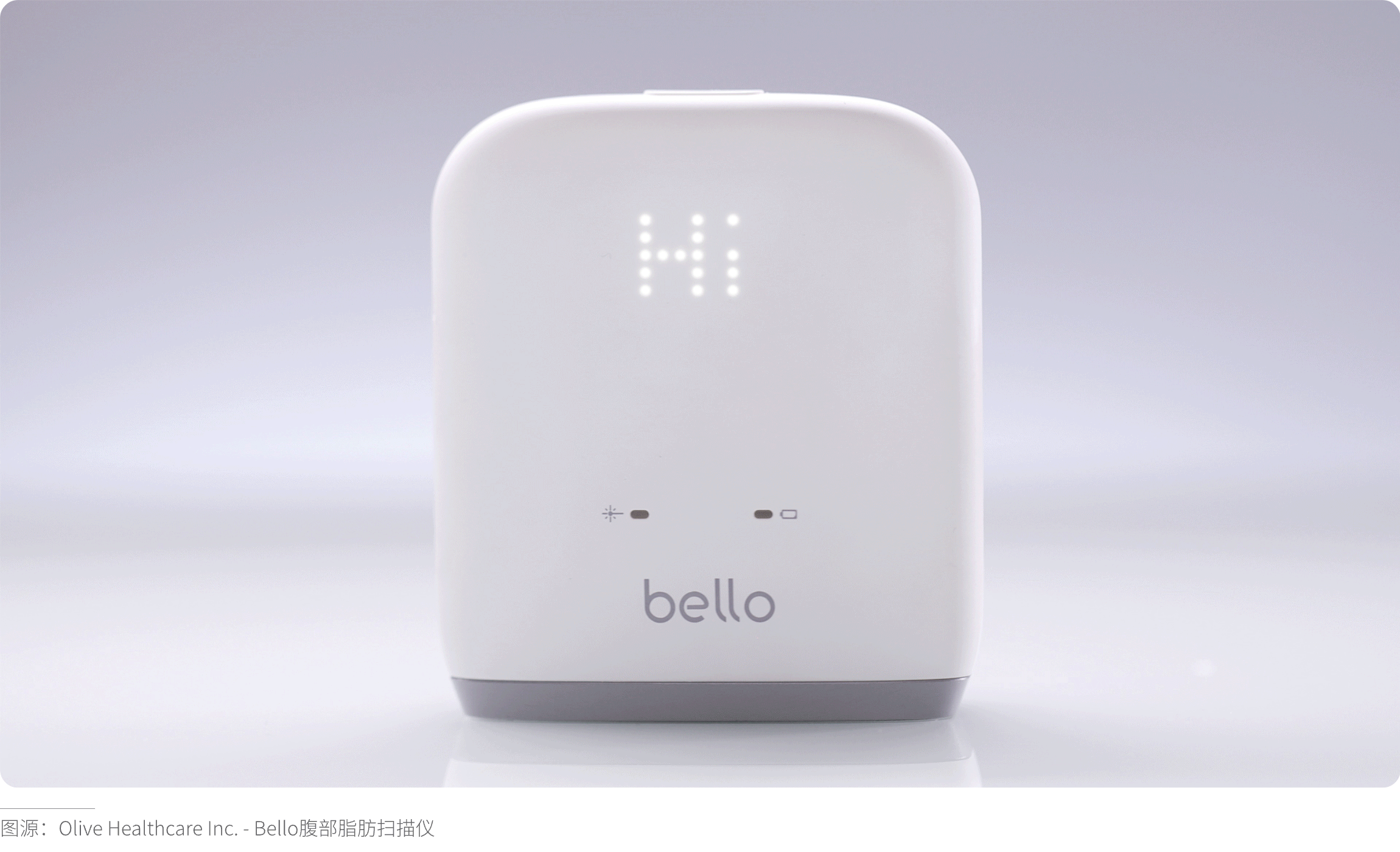
3.Gradual Dimming Lights: Environmental Adaptation and Emotional Soothing
This lighting style features rich color gradients, reminiscent of a rainbow's smooth transition. It adds a layered beauty to products, creating a fairy-tale-like dreaminess. By utilizing RGB light sources to achieve color gradients (e.g., red to blue, bright to dark), it evokes a sense of fluidity and emotional ambiance.
For devices aimed at alleviating patient anxiety, such as large imaging equipment like MRI or CT scanners, gradual dimming lights play a significant role. Inside the scanning chamber or in areas visible to the patient, a softly pulsating gradual dimming light is often incorporated, typically in calming blue or soft green hues. This light effect, mimicking the rhythm of breathing, effectively guides patients to take deep breaths, diverting their attention and significantly reducing feelings of claustrophobia and fear in confined spaces.


4.Runway Circle Lights: Dynamic Guidance and Process Indication
Runway circle lights, typically oval or runway-shaped, combine the softness and curvature of circles with the simplicity and strength of straight lines. They feature smooth contours and a sense of directionality. The lighting effect of runway circle lights is relatively concentrated and stable, usually emitting a constant glow to emphasize their shape and position, providing a clear visual identifier for the product.

5.Hidden Lights: Discreet Illumination and Unobtrusive Monitoring
Hidden lights are a subtle yet luxurious presence. Skillfully integrated into the product, they create a mysterious and elegant ambiance through delicate variations in light and shadow.
This design philosophy is perfectly embodied in the medical field. Soft hidden lights embedded beneath or along the edges of medical products serve as nighttime patrol lights. They provide sufficient illumination for users to see their footing without directly shining into patients' eyes, ensuring uninterrupted sleep. This "light without seeing the source" design reflects meticulous care for users, fostering a tranquil and restful recovery environment.
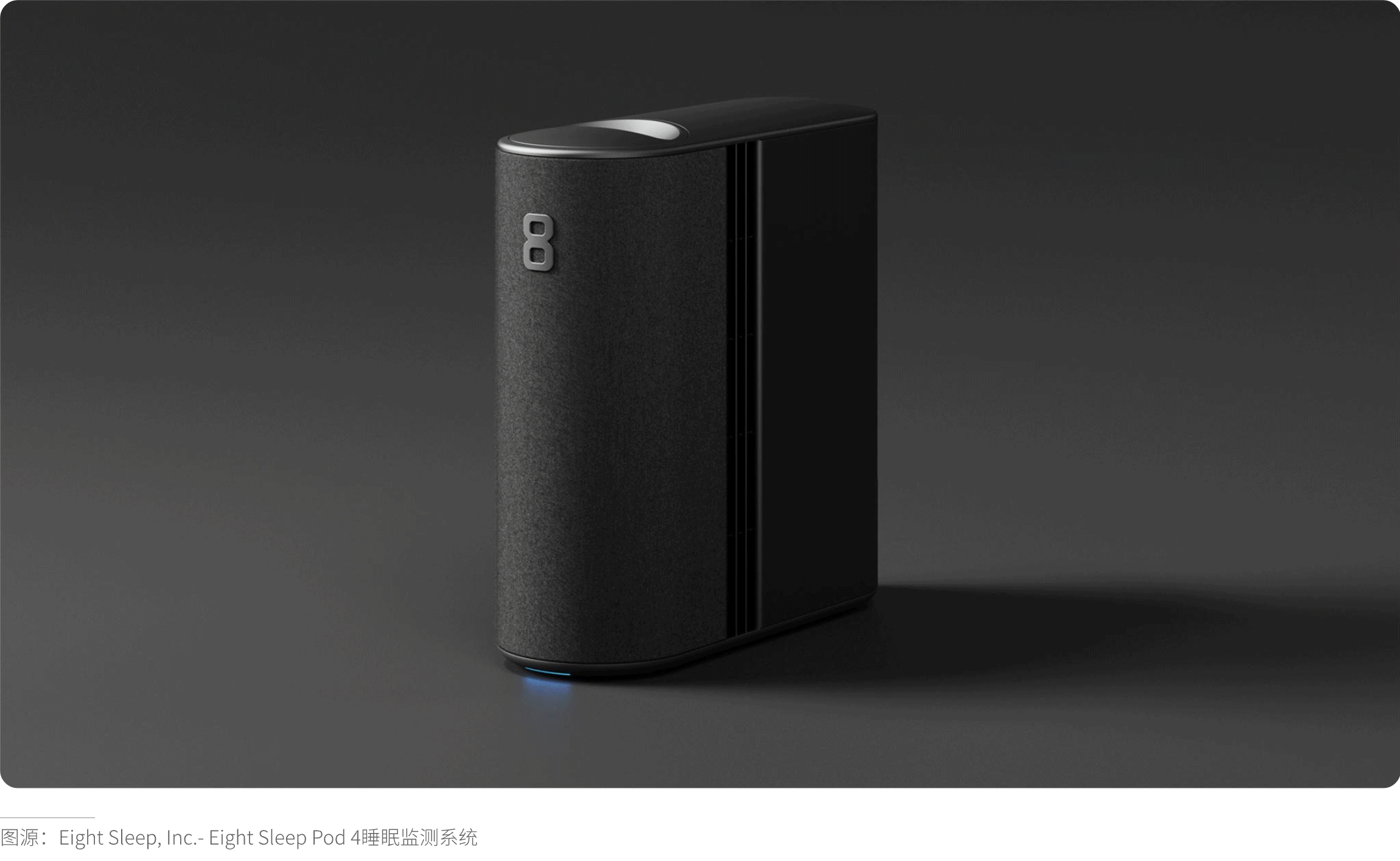
6.Vertical Strip Lights: Function Switching and Mode Indication
Vertically arranged strip lighting conveys simplicity and professionalism, offering a minimalist yet aesthetically pleasing effect. It brings a sense of order to the product, highlighting its refinement and quality. Typically positioned along the edges, sides, or as natural dividers in physical structures, these lights enhance the product's design. Slim light strips exude precision and a technological feel, while wider strips are more prominent. The proportions must harmonize with the product's dimensions.
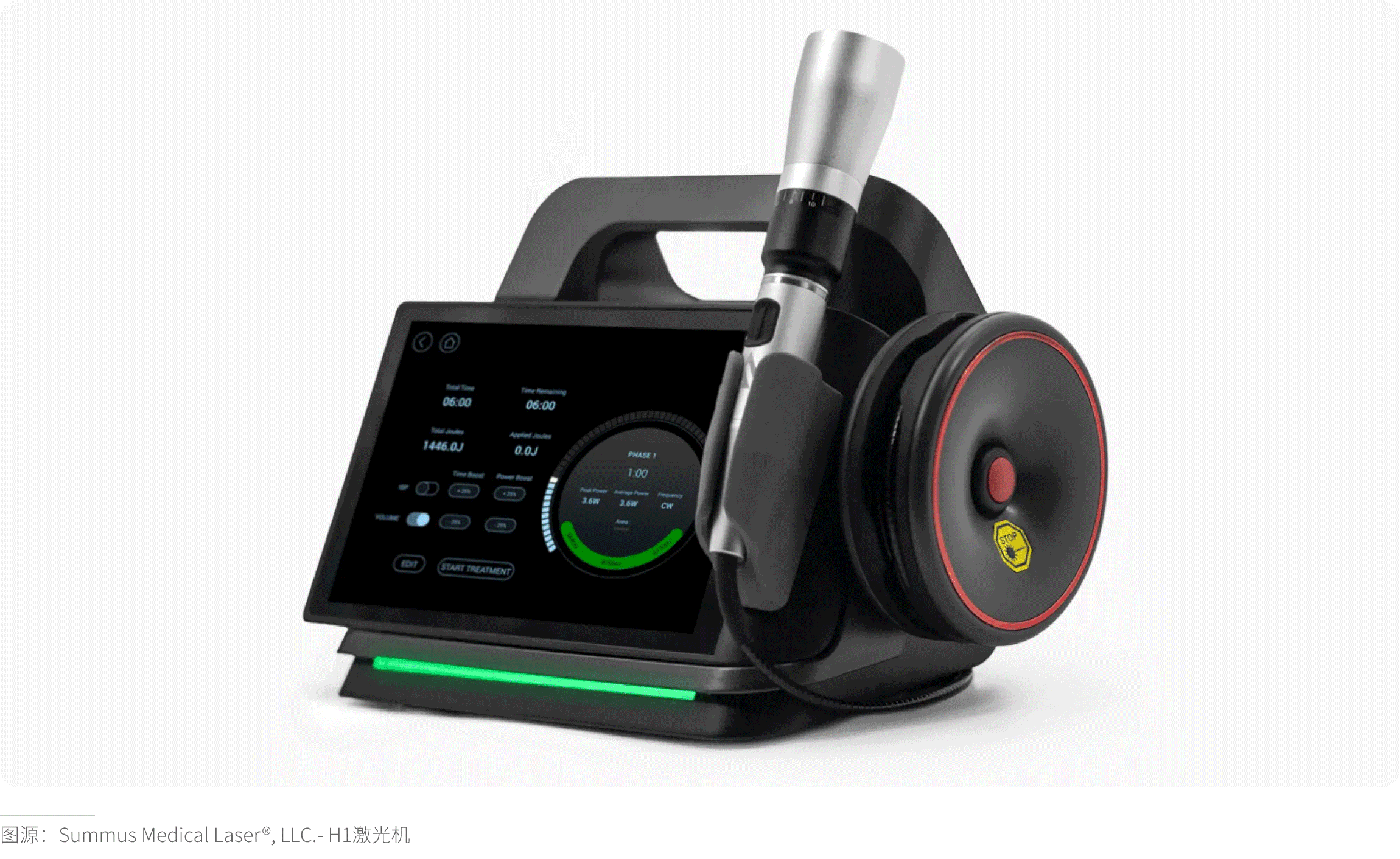
(Epilogue)
Within the subtle interplay of light and shadow lies our profound understanding of medical scenarios, rigorous adherence to safety standards, and thoughtful attention to human needs. A successful indicator light and lighting effect design can transform complex medical equipment into something perceptible, easy to communicate with, and warm.
As a team dedicated to the industrial design of medical products, Wanyouyinli Design always centers on "clinical needs," upholds "compliance standards" as the baseline, and refines every detail of lighting effects within the framework of "safety and usability." We believe that excellent medical product design does not require an extravagant appearance but must embody details that "understand clinical scenarios and prioritize safety."
Feel free to follow and like us. See you in the next issue!
